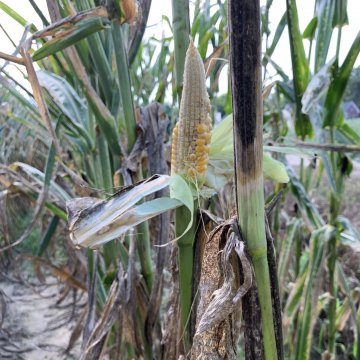Explore our blog featuring articles about farming and irrigation tips and tricks!
Where Is The Corn?

By: Heather Barnes
Walking through the cornfield in front of our house last week, my farmer husband and I found plenty of cornstalks but not many ears of corn. The ears we did find were either undersized or missing most of their kernels.
We were lucky to get the corn planted at all. The planter should have been running in late March or early April, but fields were to wet. When it dried enough to plant, it was late April. Here in North Carolina, we can plant corn until May 15 and still make a crop. The earlier you plant, however, the better, so corn is tasseling in late May or early June before it gets to hot. So what happened to the corn?
Most likely our corn didn’t mate.
Corn, like all members of the grass family, has both male and female reproductive structures on the same plant, but in separate places. At the top of the plant is the tassel, the male, which produces two to five million grains of pollen. Farther down the stalk is the female flower, the ear. The silk, which I just thought was there to frustrate me when cleaning corn, actually is vital to corn reproduction. Silks are the path for the male reproductive cells to reach the ovules, also known as the kernels.
Since the two partners are so far apart, corn is usually cross-pollinated. Their pollen is spread by wind, so the silks of one plant are usually pollinated with pollen from another corn plant in the field.
Stay up to date on all T-L news and get alerts on special pricing!


